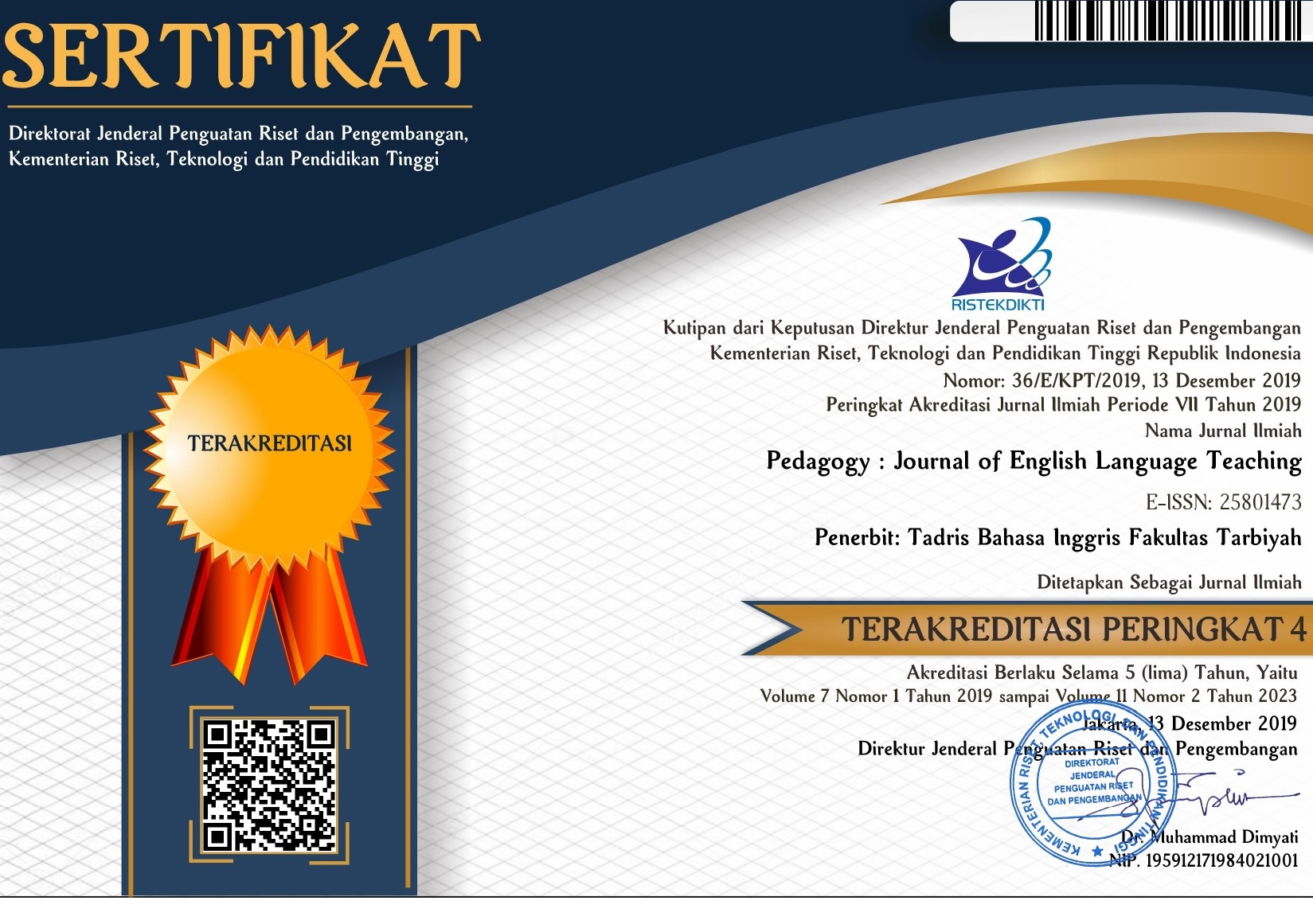The Use of Multi-modal Texts in An English Classroom of Hard-of- Hearing Learners
DOI:
https://doi.org/10.32332/pedagogy.v7i2.1661Keywords:
Multi-modality, hard-of-hearing learners, reading materialsAbstract
This article provides a story of a teacher’s experience in using ICT-integrated multimodal texts to help heard-of-hearing learners develop or improve their literacy skills especially in mastering reading comprehension. Specifically, this study tried to investigate students’ engagement in classroom activities involving multimodal reading materials. In addition, their perceptions toward the use of multimodality were also portrayed. The study was carried out in a special need school. The research is a narrative inquiry study of an English teacher and three hard-of-hearing learners. The material consists of video observation, photographs, field notes, documents, and interviews with the teacher and the students. The findings showed that multimodal texts which were built with diverse modes of semiotic resources such as color, sound, motion, written text, and gesture could ease the teacher to help the students perform better in the area of reading comprehension. Moreover, the use of multimodal texts allowed students to participate more actively in classroom activities. I believe that the result of the study contributes to the body of knowledge regarding the use of texts for reading purposes.















